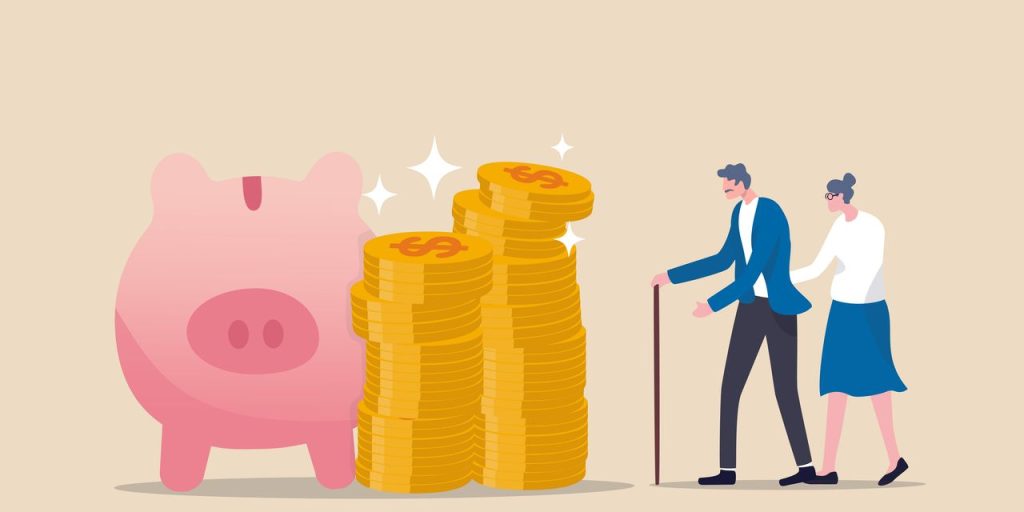A plain-vanilla whole-life insurance policy involves monthly payments for life with a death benefit paid to the policy’s beneficiaries. For example, average monthly premiums for a $1 million whole-life policy are $660 for a healthy 25-year-old female and $765 for a healthy 25-year-old male. The respective life expectancies are 82 and 78 years.
For either sex, the total premiums paid are less than half the $1 million death benefit if the insured person lives until their life expectancy. Buyers can earn a return on their premiums and having the security of knowing that their beneficiaries will receive $1 million when they die.
No wonder so many people buy life insurance. Yet the implicit rates of return on those monthly premiums are surprisingly small. For example, for females living to 82, and males living to 78, the return for each is about 2.5% annually. The implicit return is somewhat higher with an earlier death—but that is a morbid bet and still a lousy return.
Suppose that, instead of paying insurance premiums, our healthy 25-year-old female had invested the money. If she earns a 5% annual return, she will have accumulated $1 million by age 65, $2.5 million if she lives to her life expectancy of 82 years, and $3.7 million if she lives to 90.
Meanwhile, a male investing $765 a month and earning a 5% annual return will accumulate $1 million by age 63, $2.3 million if he lives to his life expectancy of 78 years, and $4.3 million if he lives to 90.
The assumed 5% returns are relatively modest. At historically plausible annual U.S. stock market returns of 7.5% or 10%, wealth grows to $1 million decades before life expectancy — and that wealth is astonishingly well-above $1 million if our 25-year-olds live to or beyond their life expectancy.
“ Why would any well-informed person buy life insurance?”
Why would any well-informed person buy life insurance instead of investing the premiums directly with the expectation of earning more than a 2.5% return?
There are a few general principles. One is that insurance companies set their premiums so that they make money on average, which means that the average person who buys life insurance loses money.
In order for insurance to be a wager with a positive expected value, a buyer must have an unusually high probability of collecting the benefits. They may have medical problems but are nonetheless able to buy medical insurance at premiums set for people in good health. They may not be a safe driver but can buy car insurance at premiums set for good drivers. They may have a terminal illness but can buy life insurance at premiums set for people with average life expectancies.
An alternative good reason for buying insurance is to protect against financially catastrophic events; for example, being sued for personal injury after an automobile accident or dying and leaving a family with no income or assets.
For life insurance, there are many situations where a death might be emotionally devastating but not be financially ruinous — because there is no need to replace lost income. For example, the death of a child, senior citizen, or other family member who is not working is unlikely to be a financial catastrophe. Similarly, the death of a person who is working but does not have other people dependent on their income is generally not financially devastating. Even the death of a person who is working and provides income to support others can be surmounted if other family members are working, substantial wealth has been accumulated, or others can be counted on for financial support.
Viewed in this way, there is a fairly narrow window for when life insurance is needed: a window that begins when a person starts working and has others dependent on that income but has not yet accumulated substantial wealth, and ends when this person stops working or has accumulated substantial wealth. The perspective argues for a term insurance policy that covers that window of need and nothing more.
On the other hand, selling insurance can be very financially rewarding. When an insurance company sets premiums to pay a 2.5% annual rate of return, it is effectively borrowing money from its policyholders at a 2.5% interest rate.
As long as the insurance company earns greater than a 2.5% return on the premiums (the “float”), it will have a substantial leveraged profits. A great example is Warren Buffett’s Berkshire Hathaway
BRK.A,
BRK.B,
which owns Geico, General Re, Berkshire Reinsurance and Berkshire Primary Insurance, and had a float of $164 billion on Dec. 31, 2022. Effectively borrowing at 2.5% and investing at 5%, 10% or 15% provides a sweet annual profit of $4.1 billion, $12.3 billion, and $20.5 billion, respectively. For comparison, Berkshire average net earnings over the past three years has been $37.3 billion. Clearly, insurance float is a large part of Berkshire’s not-so-secret sauce.
It is not easy to start a well-capitalized insurance company. It is easy to stop buying insurance you don’t need.
Gary Smith, Fletcher Jones Professor of Economics at Pomona College, is the author of dozens of research articles and 16 books, most recently, “Distrust: Big Data, Data-Torturing, and the Assault on Science” (Oxford University Press, 2023).
More: That 401(k) match isn’t just free money, 3% could buy you two years of retirement
Also read: The limit for 401(k) contributions will jump nearly 10% in 2023, but it’s not always a good idea to max out your retirement investments
Read the full article here




